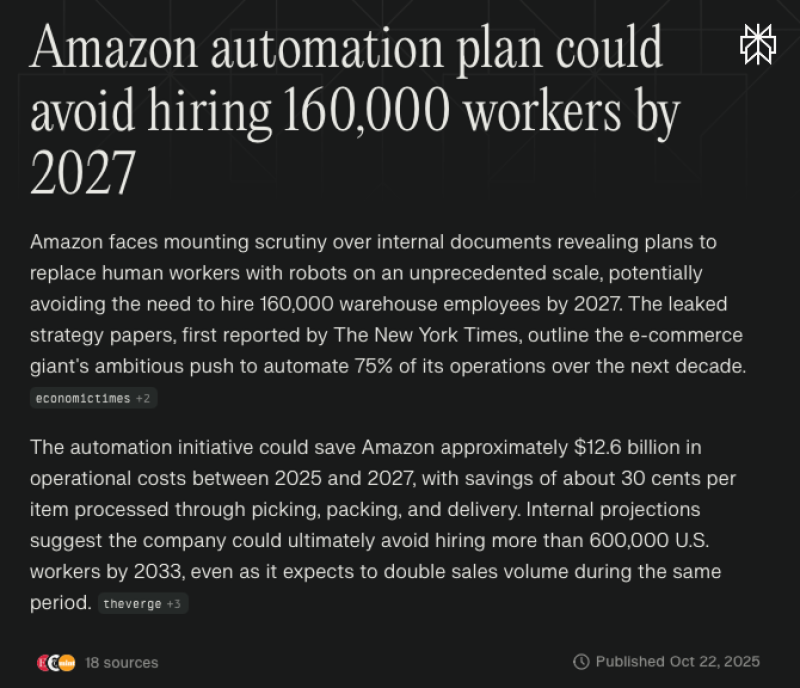Wall Street took a hit on Monday after reports surfaced that Amazon is planning to eliminate as many as 30,000 positions, with the first round of layoffs expected to be announced on Tuesday. The decision marks a significant shift toward efficiency-driven restructuring in Big Tech as companies adapt to changing market conditions.
Wall St Engine Trader Flags Potential Start of Broader Cuts
A post from Wall St Engine suggested the news might be just "the beginning" — hinting at further cost-cutting measures as Amazon adjusts to slowing consumer demand, tighter margins, and post-pandemic operational challenges.

The move signals a new phase for the tech giant as it prioritizes profitability over expansion.
Chart Analysis: Technical Pullback Signals Market Uncertainty
Amazon's stock chart shows growing hesitation following the layoff reports. After a solid uptrend through most of the year, momentum has stalled near the $185–$188 resistance zone, forming a short-term reversal pattern.
Key technical levels to watch include:
- Resistance at $185–$188, which has repeatedly capped upside moves
- Support near $165–$168, where the 50-day moving average aligns with recent consolidation
- Volume showing a noticeable uptick, suggesting investors are repositioning ahead of Tuesday's announcement
If the stock breaks below $165, it could trigger a deeper pullback toward $160, especially if broader market sentiment turns negative. On the flip side, a rebound from current levels might signal investor confidence that the layoffs will actually improve Amazon's margins and operational efficiency.
Why Amazon Is Cutting Jobs
Based on a report from Reuters, the layoffs are part of a broader cost-optimization strategy aimed at boosting profitability as global e-commerce growth slows. The cuts are expected to hit retail logistics, human resources, and device divisions hardest — areas where automation has been making the biggest impact and cost pressures have been mounting. Amazon has been dealing with higher operating costs from wage inflation and logistics expenses, declining retail margins as shoppers focus more on essentials, and increased competition from players like Walmart, Temu, and Shein. By trimming staff, the company wants to redirect resources toward high-growth areas like AWS, AI infrastructure, and robotics-driven logistics to maintain its competitive edge.
Investor Reaction: Efficiency vs. Growth Concerns
The market's response has been mixed. Some investors view the cuts as a smart move toward margin recovery, similar to what Meta, Alphabet, and Microsoft have already done. Others worry that eliminating roughly 1% of Amazon's global workforce points to deeper issues with demand in its core retail business. While short-term volatility seems likely, institutional analysts generally expect the restructuring to improve Amazon's operating leverage by mid-2026, assuming consumer spending stabilizes and AWS keeps growing
 Peter Smith
Peter Smith

 Peter Smith
Peter Smith


